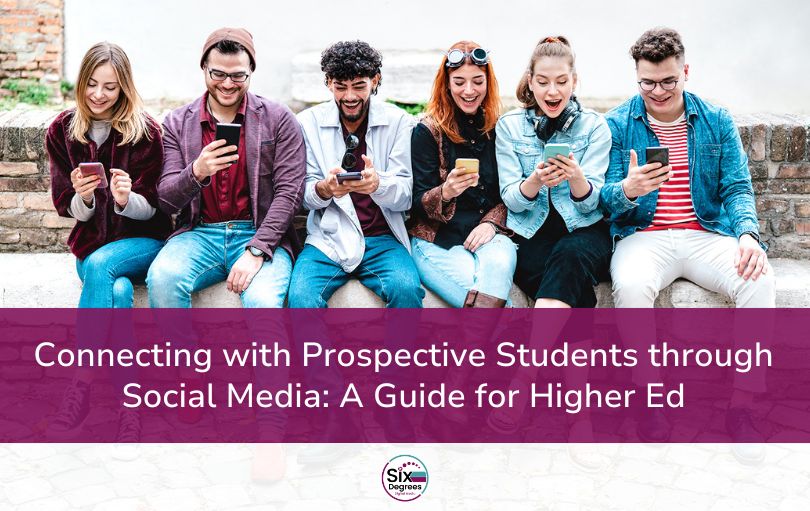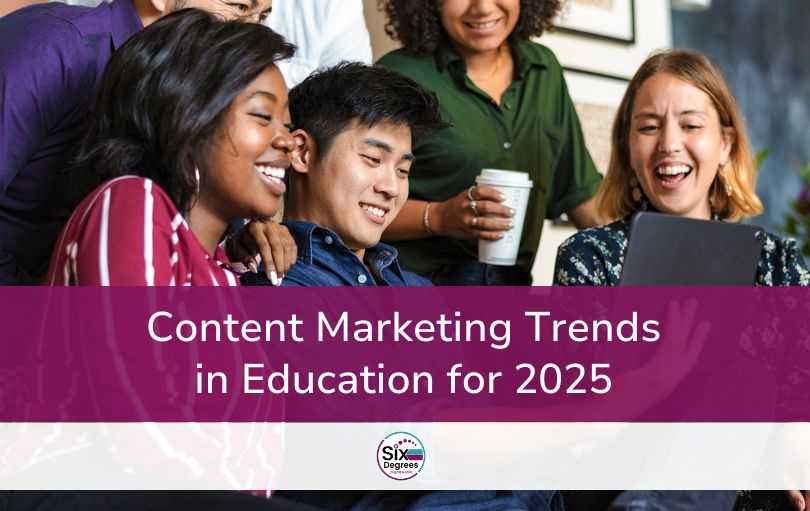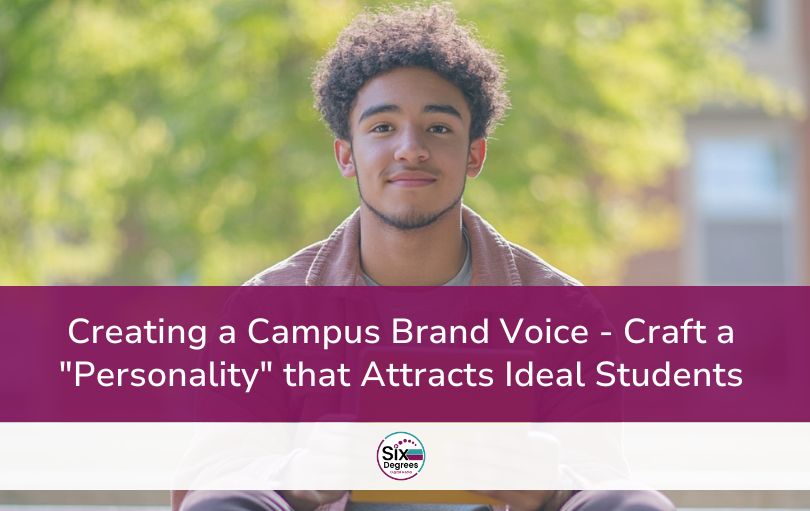Scrolling through Instagram, watching TikToks, and searching YouTube—this is how today’s prospective students explore their education options. Before they ever visit a campus or speak with an admissions counselor, they’re already forming opinions about schools based on what they see online. If your institution isn’t showing up in their feed, you may already be out of the running.
Yet, many schools struggle to turn social media into a true recruitment tool. Posting generic content or relying on outdated strategies leads to low engagement and missed opportunities. Without a clear plan, institutions can end up talking at students instead of creating meaningful connections.
The good news? A well-executed social media strategy can do more than just increase brand awareness—it can drive inquiries, applications, and enrollments. By meeting students where they are, providing engaging and interactive content, and using social media as a two-way conversation, your institution can build relationships that turn interest into action.
This guide will break down how to use social media effectively to connect with prospective students, increase engagement, and ultimately fill your programs with students who are excited to enroll.
Why Social Media Matters for Student Recruitment
Imagine a high school senior named Alex, exploring options for higher education. Instead of attending traditional college fairs or waiting for brochures in the mail, Alex turns to social media platforms like Instagram, TikTok, LinkedIn, and YouTube to research potential schools. Through these channels, Alex watches campus tour videos, reads student testimonials, and even participates in live Q&A sessions hosted by current students and faculty. This digital exploration significantly influences Alex’s perception of each institution and plays a pivotal role in the final application decisions.
This scenario reflects a broader trend among today’s prospective students, who increasingly rely on social media to gather information and make informed choices about their education. Engaging with students in meaningful ways on these platforms can lead to higher interest and application rates. Studies1 found that social media interactions play a significant role in influencing prospective students’ decisions when choosing a university.
Choosing the Right Platforms for Your Audience
Selecting the appropriate social media platforms is crucial for effectively reaching and engaging prospective students. Here’s a breakdown of popular platforms and their optimal uses:
Instagram & TikTok: These visually-driven platforms are ideal for sharing student testimonials, behind-the-scenes glimpses of campus life, and engaging short-form videos. Given that a significant portion of 18–24-year-olds are active on Instagram and TikTok2, utilizing these platforms can effectively reach younger audiences.
LinkedIn: For career-focused programs, highlighting alumni success stories, industry partnerships, and professional development opportunities, LinkedIn serves as the go-to platform. It attracts individuals seeking to advance their careers and network within professional circles.
YouTube & Connected TV (CTV) Ads: When it comes to longer-form content such as in-depth student spotlights, virtual campus tours, and detailed program information, YouTube and CTV platforms like Hulu and Roku are effective channels. They allow institutions to showcase comprehensive content to a broad audience.
Facebook & Twitter: While these platforms may see less engagement from younger demographics, they remain valuable for promoting events and engaging with parents who play a role in the college selection process. Sharing updates, event information, and community news can keep this audience informed and involved.
Content Strategies to Engage Prospective Students
Prospective students aren’t just looking for information, they’re looking for connection. The best way to capture their attention is by creating content that feels personal, authentic, and interactive. Instead of relying on static updates, schools should focus on engagement-driven strategies that invite students into the experience.
[Free download: A 7-Day Blueprint for Crafting Posts that Drive Engagement and Build Awareness]
- Student-Generated Content – Nothing builds trust like hearing directly from students. Feature real experiences through takeovers, testimonials, or a “day in the life” series where students showcase their campus routines.
- Interactive Q&A Sessions – Host live Q&A sessions on Instagram, TikTok, or YouTube to address prospective students’ biggest questions in real time. These sessions create a sense of accessibility and help students feel more comfortable reaching out.
- Behind-the-Scenes Stories – Give a glimpse of campus life beyond the brochures. Show off dorms, student clubs, classroom settings, and even casual hangout spots to help prospective students envision themselves on campus.
- Polls & Engagement Posts – Interactive content, like polls and “this or that” challenges, keeps your school top of mind while subtly reinforcing your value. Ask students what they look for in a college experience or have them vote on fun topics related to campus life.
Personalizing Outreach with Social Media
Generic messages won’t cut it when trying to connect with prospective students. Personalization is key to making interactions feel relevant and meaningful. By tailoring outreach efforts, schools can foster stronger relationships and guide students through their decision-making process.
- Direct Messaging & Quick Responses – When students reach out with questions, fast replies make a lasting impression. A prompt, friendly response on Instagram, TikTok, or LinkedIn can set your school apart.
- Customized Content for Different Audiences – Not every prospective student is looking for the same experience. Highlight different academic programs, campus activities, and career paths based on student interests.
- Follow-Up Engagement – If a student likes or comments on a post about a program, follow up with additional resources or invite them to an upcoming event. Small touches make a big difference in nurturing leads.
- Exclusive Social Media Offers – Encourage deeper engagement with incentives like application fee waivers or early campus visit invitations for students who engage with social content.
Leveraging Paid Social Media & Retargeting
Organic content is essential for engagement, but paid social media takes recruitment to the next level by ensuring your school reaches the right students at the right time. With strategic targeting and retargeting, institutions can stay top of mind throughout a student’s decision-making process.
- Targeted Ads on Instagram, Meta, and YouTube – Platforms allow schools to refine their audience based on location, interests, education level, and online behavior. This ensures your content reaches students most likely to be interested in your programs.
- Retargeting for Interested Students – Not every prospective student applies after their first interaction. Retargeting helps re-engage those who visited your website, watched a video, or interacted with a post but haven’t taken the next step.
- CTV & YouTube Pre-Roll Ads – Video ads placed on streaming services and YouTube can significantly boost awareness. High-quality visuals showcasing campus life, student success stories, and program highlights can influence decisions.
Tracking Success: Metrics That Matter
A strong social media strategy isn’t just about creating content—it’s about knowing what works and what doesn’t. Schools that track the right performance metrics can refine their approach, improve engagement, and ensure their efforts lead to real student interest. Instead of relying on vanity metrics, focus on data points that show impact.
- Engagement Rate – Likes, comments, shares, and DMs indicate how well content resonates. Higher engagement means students aren’t just seeing your posts, they’re actively interacting.
- Click-Through Rate (CTR) – Measures how many students take action after seeing a post or ad. A strong CTR suggests that your messaging is compelling enough to drive curiosity and next steps.
- Conversion Rate – Tracks how many prospective students sign up for open houses, submit applications, or fill out inquiry forms directly from social media. This is one of the best indicators of real impact.
- Audience Growth Rate – Shows whether your school’s reach is expanding. A steady increase in followers means your content is attracting new prospective students and keeping them engaged.
Tracking these key metrics allows schools to adjust strategies based on real-time data. If engagement is low, it may be time to tweak content formats. If CTR is strong but conversion rates are lacking, your call to action may need refining.
Moving Forward
Social media is more than just a place to share updates—it’s a powerful recruitment tool that, when used strategically, can drive student interest and increase applications. The key is to create content that resonates, engage with students authentically, and track performance to refine your approach.
Even small adjustments, like featuring more student testimonials, hosting live Q&A sessions, or increasing interactive content, can make a measurable difference. Schools that actively engage with prospective students in meaningful ways build stronger connections and stand out in a crowded higher education landscape.
Need help refining your school’s social media strategy? Let’s build a plan that works for your institution. Book a free call today.
1 https://expertadmissions.com/social-medias-impact-on-college-admissions/
2 https://sproutsocial.com/insights/new-social-media-demographics/?utm_source=chatgpt.com





